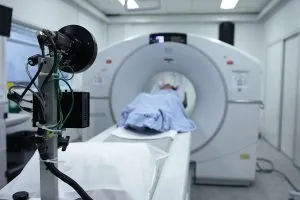Last Updated on November 10, 2023 by tech pappy
From the introduction of the stethoscope in the 180s to the development of the use of x-rays in the early 20th century, Medicine technology has played an essential and pivotal role in how doctors have practiced medicine. With each amazing invention, the science of explaining and treating patients has advanced and benefited people of each progressive generation. The technological and digital inventions and innovations of today are now front and center in the world of medicine. These cutting-edge devices entering the marketplace provide help. With medical technology, The lives of patients are more empowered than ever before. Physicians utilize technological advancements in determining diagnosis and possible treatment options. also improving their communication with those they serve.New Exciting Roles for medicine technology
The positive role that modern technology plays in the practice of medicine today cannot be overstated. Imaging machine options alone have revolutionized the ability to visually see inside the body of a patient, profoundly impacting the ability to accurately diagnose and recommend treatment. Medical technology like CT, PET, and MRI machines provides detailed scans that reduce the need for exploratory surgeries. 3-D printers produce models that can be manipulated by doctors. These models help to simulate strategies for possible treatments and procedures before surgery. This innovative hands-on approach makes it possible to construct surgical plans before implementation. The capabilities of 3-D technological information also allow for the reconstruction of bones or organs to be included in treating patients. Medical students in the future could use virtual reality scenarios to practice their skills. There is no need to use a living human being for that purpose. The above-listed technological advancements have allowed for the increase of specialized medical fields, where doctors now efficiently hone their skills involving a particular organ system. State-of-the-art machines have produced the need for new types of medical experts, such as radiographers and radiologists. With each technological advancement, the training of medical professionals will also follow. Other advancing innovations have occurred in the fields of data gathering and analysis. With the increase of monitoring through mobile apps in patients, from their vital signs (heart and lung functions, sugar levels) to behavioral patterns (hours slept, calories consumed, steps walked), doctors have myriads of data to analyze and interpret to aid in determining a diagnosis and treatment plan. Artificial Intelligence (AI) is utilized to aid physicians in accomplishing these goals. AI enables quicker movement into research to plan prevention. Epidemic and pandemic outbreaks of catastrophic diseases such as Ebola or Polio are preventable.
This innovative hands-on approach makes it possible to construct surgical plans before implementation. The capabilities of 3-D technological information also allow for the reconstruction of bones or organs to be included in treating patients. Medical students in the future could use virtual reality scenarios to practice their skills. There is no need to use a living human being for that purpose. The above-listed technological advancements have allowed for the increase of specialized medical fields, where doctors now efficiently hone their skills involving a particular organ system. State-of-the-art machines have produced the need for new types of medical experts, such as radiographers and radiologists. With each technological advancement, the training of medical professionals will also follow. Other advancing innovations have occurred in the fields of data gathering and analysis. With the increase of monitoring through mobile apps in patients, from their vital signs (heart and lung functions, sugar levels) to behavioral patterns (hours slept, calories consumed, steps walked), doctors have myriads of data to analyze and interpret to aid in determining a diagnosis and treatment plan. Artificial Intelligence (AI) is utilized to aid physicians in accomplishing these goals. AI enables quicker movement into research to plan prevention. Epidemic and pandemic outbreaks of catastrophic diseases such as Ebola or Polio are preventable. 

